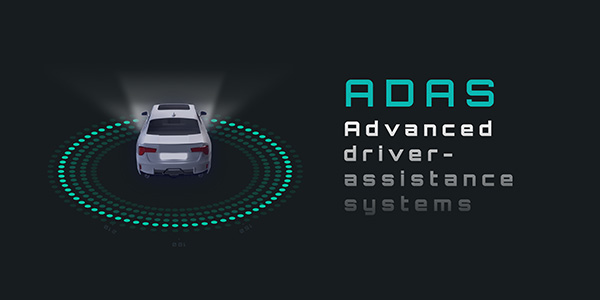
Driving has come a long way from being a fully manual task. Thanks to cutting-edge advancements in automotive technology, cars are now equipped with features that not only assist drivers but also enhance overall safety. Among these technologies, Advanced Driver Assistance Systems (ADAS) have become a game changer. But what exactly is ADAS, and how does it make our roads safer? Let’s look into this innovative system and its role in modern driving.
ADAS: The Basics
ADAS stands for Advanced Driver Assistance Systems, a collection of electronic technologies designed to assist drivers in various aspects of driving. From warning about potential hazards to actively taking control in emergency situations, these systems are built to reduce human error—the leading cause of road accidents.
What sets ADAS apart is its ability to integrate sensors, cameras, radars, and software to monitor a vehicle’s surroundings and interpret data in real time. This combination allows the system to provide alerts, execute automated corrections, or even take preventive actions to avoid collisions. Whether you’re navigating congested streets or cruising on the highway, ADAS makes the driving experience safer and more convenient.
Key Features That Enhance Driving Safety
One of the best ways to understand the importance of ADAS is by looking at its features. While some are designed to warn drivers, others can intervene to prevent accidents.
1. Lane Departure Warning and Lane Keeping Assist
Lane departure warning systems notify drivers if they unintentionally drift out of their lane. Using cameras to detect lane markings, the system issues an audible or visual alert to prompt the driver to correct their course. Lane-keeping assist takes this a step further by gently steering the car back into its lane, ensuring safer lane discipline.
2. Adaptive Cruise Control
Gone are the days when you had to constantly adjust your speed to maintain a safe distance from the car ahead. Adaptive cruise control uses radar and cameras to maintain a preset speed and adjust it automatically based on the distance to the vehicle in front. This feature is especially useful during long highway drives, reducing fatigue and minimizing rear-end collision risks.
3. Automatic Emergency Braking
This life-saving feature detects potential collisions with vehicles, pedestrians, or obstacles and applies the brakes automatically if the driver doesn’t respond in time. It’s particularly effective in preventing accidents in busy urban areas or during unexpected traffic stops.
4. Blind Spot Monitoring
Changing lanes without checking your blind spots can lead to accidents. Blind spot monitoring systems use sensors to detect vehicles in adjacent lanes and provide visual or audible alerts to prevent unsafe lane changes.
5. Traffic Sign Recognition
Ever missed a speed limit sign and ended up speeding unintentionally? Traffic sign recognition systems use cameras to detect and display road signs, helping you stay aware of speed limits, stop signs, and other important road information.
6. Rear Cross-Traffic Alert
Backing out of a driveway or parking space can be stressful, especially when visibility is limited. Rear cross-traffic alert systems monitor the area behind your car and warn you of approaching vehicles, making reversing safer.
How ADAS Enhances Safety on the Road
ADAS isn’t just about convenience; it’s about actively reducing the likelihood of accidents. Here’s how it achieves this:
Minimizing Human Error
Human error accounts for over 90% of car accidents. Distractions, fatigue, and poor decision-making can all lead to dangerous situations. ADAS features, like forward collision warnings and driver monitoring systems, act as a second set of eyes, helping drivers stay alert and focused.
Improving Reaction Times
In emergencies, split-second decisions can be the difference between a close call and a collision. ADAS systems, such as automatic emergency braking, react faster than human reflexes, providing a crucial safety net.
Encouraging Better Driving Habits
By providing consistent feedback, such as lane departure warnings or speed alerts, ADAS encourages safer driving behaviors. Over time, this can lead to improved road safety for everyone.
Limitations of ADAS
While ADAS is a remarkable innovation, it’s not a substitute for attentive driving. Drivers must remain fully engaged, as these systems have limitations. Poor weather conditions, such as heavy rain or fog, can impair the functionality of sensors and cameras. Relying solely on ADAS without understanding its capabilities can lead to overconfidence and risky behaviors.
Regular maintenance is also crucial for ensuring these systems work effectively. Misaligned cameras or malfunctioning sensors can compromise the accuracy of the system, making it less reliable in critical moments.
Why Maintenance It Important For the ADAS Systems
To get the most out of your vehicle’s ADAS features, routine inspections and maintenance are essential. Ensuring that sensors, cameras, and radars are clean and correctly aligned allows the system to function accurately. Software updates from the manufacturer may also be required to enhance performance or fix known issues. If you’re in McFarland, WI, and need assistance with maintaining your vehicle’s advanced safety features, turning to our trusted repair shop is a wise choice.
Stay safe on the road with properly maintained ADAS technology. Visit Tom’s Auto Center in McFarland, WI, for a thorough inspection of your vehicle’s safety systems. Your peace of mind starts here—contact us now!